-----
To qualify for the federal tax credit, one must not exceed the following adjusted gross income limits:
$300,000 for married couples filing jointly
$225,000 for heads of households
$150,000 for all other filers
Federal EV Tax Credit is not refundable, which means one must have federal tax due to take advantage of it. If the tax due is less than the credit amount, one can only claim the credit up to the amount of the tax due.
--------------
Here's how cheap you can get a new Model 3 RWD right now (including fed & local EV incentives):
• VT: $26,320
• MA: $26,830
• PA: $27,330
• MD: $27,330 - Delivered after July 1, 2023 https://marylandev.org/maryland-ev-tax-credit
• RI: $27,820
• DE: $27,820
• NY: $28,320
• CA: $28,330
• CO: $28,330
• CT: $29,030
• ME: $29,320
on top of above info federal, state and local incentive info that i posted , some employers are also providing ev incentive like exaple bank of america employees gets $5k incentive , in this case the best case scenario is like below
example scenario
• VT: $26,320 - $5000 bank of america employee ev incentive = $21,320
-------------
CA CLEAN VEHICLE REBATE PROGRAM
$2K is available if your household makes <$200k.
There is an increased rebate of $7500 ($5500 on top of the $2k) available if you fall below income caps based on your household size.
Family of 4 max is $111k, Family of 6 is $149k.
This comes in the form of a check in 2-3 months. https://cleanvehiclereb
This is separate from the CARB Clean Vehicle Grants described below the dashes. It is possible to qualify for both, but the timing is different.
----------------
And California residents that live in a disadvantage community (DAC) https://cleanvehiclegra
Disadvantaged communities are determined using CalEnviroScreen (https://oehha.ca.gov/calenviroscr...
here's the DAC map: https://oehha.ca.gov/calenviroscreen/sb535
And receive an Approval Letter through email.
You must receive an Approval Letter BEFORE you purchase a vehicle. We do not offer rebates and you cannot redeem a grant if you have purchased a vehicle before being approved.
This post can be edited by most users to provide up-to-date information about developments of this thread based on user responses, and user findings. Feel free to add, change or remove information shown here as it becomes available. This includes new coupons, rebates, ideas, thread summary, and similar items.
Once a Thread Wiki is added to a thread, "Create Wiki" button will disappear. If you would like to learn more about Thread Wiki feature, click here.
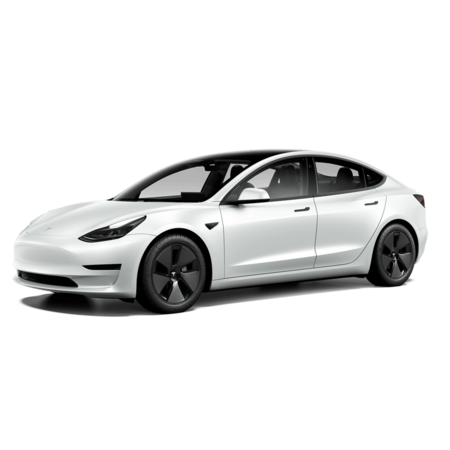
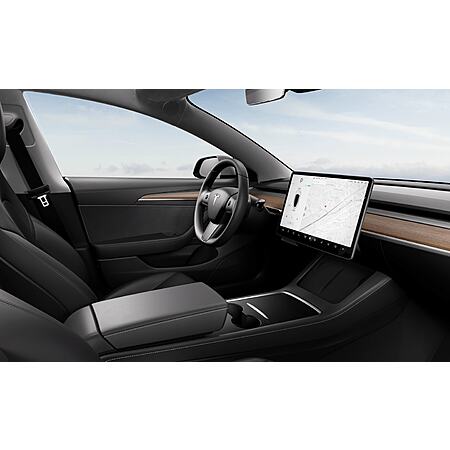
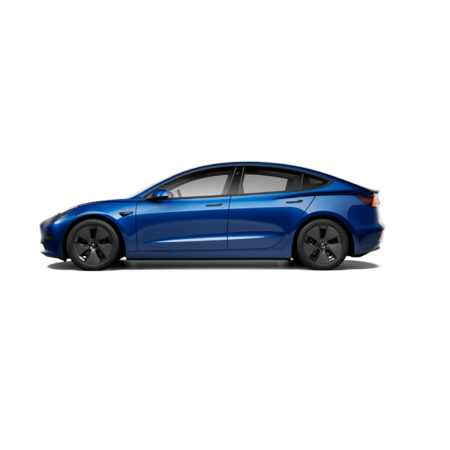
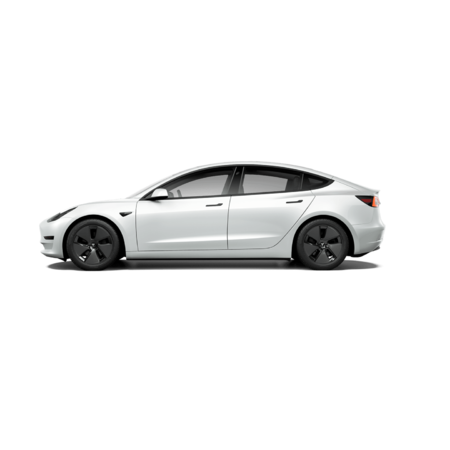
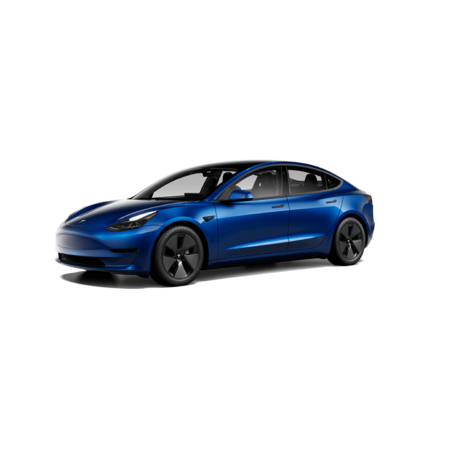



Leave a Comment
Top Comments
https://www.tesla.com/model3/design
Deal is even sweeter if you live in a state with additional credits:
VT: $26,320
MA: $26,830
PA: $27,330
RI: $27,820
DE: $27,820
NY: $28,320
CA: $28,330
CO: $28,330
CT: $29,030
ME: $29,320
Full tax credit details below, but the following income limits apply:
$300,000 for married couples filing jointly
$225,000 for heads of households
$150,000 for all other filers
https://www.irs.gov/credits-deduc...3-or-after
Withholding is totally irrelevant to qualifying for the credit.
If you're unclear on this go read a 1040.
The part where you compute tax liability is lines 16 through 24.
THAT is where the $7500 EV credit comes off.
Your withholdings aren't even looked at until after that on line 25+
This is also not correct.
The Child Tax Credit is worth a maximum of $2,000 per qualifying child. Up to $1,600 is refundable for the 2023 tax year.
Refundable credits are computed AFTER non-refundable ones-- so the CTC is only "worth" $400 off your tax burden for these purposes- the $1600 left is refundable.
Thus if you had say $7900 in tax burden and one CTC and one EV credit, your tax burden would go to $0 and you'd get a full refund of the $1600 refundable part of the CTC
Source:
https://www.nerdwallet.
1,792 Comments
Sign up for a Slickdeals account to remove this ad.
https://www.midtronics.
If charging to 100%, discharging to 0%, and more than 50% DoD are all discouraged on a consistent basis, what's the best way to charge an EV battery and use it? First, it's recommended to keep an EV's charge above 20% when you can, both to maintain its battery health and to prevent range anxiety. Just like driving a gas-powered car with less than 1/4 tank, you want the assurance you'll get to refuel before you run out.
It's often recommended that the EV's battery pack is kept between 30% and 80% of its full charge to maintain its State of Health, or SoH. The CEO of one major EV carmaker has suggested that it's no problem to recharge to 90 or 95% of capacity to maintain the battery's SoH. So long as SoC is not kept at either extreme for any length of time, it should prevent degradation at any accelerated level.
The more pressing issue tends to be depth of discharge. Whether you're charging to 60%, 80%, or even 95%, it's best to keep the DoD as low as possible, and it's certainly preferred to be less than 50% DoD.
By avoiding charges to 100% regularly and always avoiding completely discharging to 0%, as well as maintaining less than 50% DoD, you'll keep your EV's battery working its best for years to come with minimal effect on SoH.
-----------------
That's why I take the "range" figure with a grain of salt - it's portrayed to ICE people because ICE vehicles can go from completely empty to completely full tanks without issue; the stated range of the car is exactly what you can get. With an EV, you really have to take the stated range and cut 30-40% off of it if you make "reservations" to not discharge below 20% or charge above 80% - yeah you can do it from time to time but it's pretty clear and universal that full discharges are bad, as well as full charges.
f Up to 80 Percent: For most EV owners, the range of their EV is more than enough for daily commutes and errands and charging up to 80 percent is plenty for a day's travel. A full charge to 100 percent is not good for lithium-ion batteries. You can lower the maximum charging limit with your EV's onboard charger.
The China made Tesla manual recommends to charge to 100% every time. LFP rocks https://driveteslacanad
LFP cells, like the ones in the car this thread is actually about, are perfectly fine to charge to 100% all the time.
Sounds like your battery info is pretty out of date.
Also your claim of it's always ok to run a gas car to empty isn't accurate either- there's multiple potential problems with that including in many cars overheating the fuel pump and in most others potentially clogging the fuel filter with sediment from the bottom of the tank.
Right-- because the remote diagnostics showed nothing wrong with the car.
Why waste the customer, and the service techs, time when there's nothing to fix?
Hilariously the Reuters story that kicked all this off includes direct quotes confirming this as accurate:
In fact the one actual Tesla owner they managed to get to be mad about this admits that even when he DID show up in person he was done in 10 minutes because... there was nothing actually wrong with the car! A fact he himself admits in the story
So if he had listened to the remote advisor and cancelled the appointment he would've just saved everyone time and money.
Even funnier, the team that seems to have not done anything but save everyone time and money yet they're SUPER MAD about?
But Tesla recently had Yet Another Record Quarter, while folks like Ford are losing billions on EVs and pulling back their projected sales and production figures- so somebody's gotta up the nonsense anti-tesla FUD stories I guess...
That is literally a federal crime under Title 49 U.S. Code 32703
Weird claims since it still not only has 3 years of warranty we also know actual data shows even 10 year old ones still retain over 80% of their original range.
I agree there's a newbie knows nothing here, but it ain't the guy you replied to
You clearly have an issue.
Also, I just copied/pasted a forbes article. If you have a problem with it, take it up with them
You think it's fine to reprint bunches of misinformation then when called out on it shrug and insist you're just repeating someone elses misinformation and that's not your problem?
Why do that at all, and why think it's ok to do it?
The China made Tesla manual recommends to charge to 100% every time. LFP rocks https://driveteslacanad
LFP cells, like the ones in the car this thread is actually about, are perfectly fine to charge to 100% all the time.
Sounds like your battery info is pretty out of date.
Also your claim of it's always ok to run a gas car to empty isn't accurate either- there's multiple potential problems with that including in many cars overheating the fuel pump and in most others potentially clogging the fuel filter with sediment from the bottom of the tank.
https://www.autoevoluti
So, based on this, charging a Li-Ion battery fully will shorten its lifecycle, no matter which chemistry it uses. This is true even for LFP batteries
So why does Tesla now recommend it?
So, the only reason Tesla recommends charging LFP batteries to 100% is to improve "the vehicle's ability to accurately determine the state of charge and estimated range," as Tesla accurately says on its website.
Womp womp.
Also, your "you shouldn't run to an empty tank" is nonsense. Not that I do it all the time, but some common sense should tell you that the whole "you'll suck up debris" is bullshit - debris settles to the lowest part of the tank whether it's full or near empty, that is debris is always near the intake of the pump. Besides, that's why fuel filters exist. The pump? It won't hurt it to run dry for a very short period of time. No fuel = no combustion = no movement. It's not going to be running for very long without fuel because..... the car won't be running. If you sit there and grind the starter for an hour, you're just plain stupid.
https://www.hagerty.com/media/mai...dangerous/
(and the guy that made the video [youtube.com] owns a Tesla, ahem, in case you're going to call him a shill).
So, based on this, charging a Li-Ion battery fully will shorten its lifecycle, no matter which chemistry it uses. This is true even for LFP batteries
So why does Tesla now recommend it?
So, the only reason Tesla recommends charging LFP batteries to 100% is to improve "the vehicle's ability to accurately determine the state of charge and estimated range," as Tesla accurately says on its website.
Womp womp.
Also, your "you shouldn't run to an empty tank" is nonsense. Not that I do it all the time, but some common sense should tell you that the whole "you'll suck up debris" is bullshit - debris settles to the lowest part of the tank whether it's full or near empty, that is debris is always near the intake of the pump. Besides, that's why fuel filters exist. The pump? It won't hurt it to run dry for a very short period of time. No fuel = no combustion = no movement. It's not going to be running for very long without fuel because..... the car won't be running. If you sit there and grind the starter for an hour, you're just plain stupid.
https://www.hagerty.com/media/mai...dangerous/
(and the guy that made the video [youtube.com] owns a Tesla, ahem, in case you're going to call him a shill).
Sign up for a Slickdeals account to remove this ad.
So, based on this, charging a Li-Ion battery fully will shorten its lifecycle, no matter which chemistry it uses. This is true even for LFP batteries
So why does Tesla now recommend it?
So the LFPs, even charging daily to 100%, will outlast the rest of the car.
Is "shortening" the lifespan from say 2 million miles to only 1 million miles something anyone cares about?
Not really.
As chemistry accurately tells us.
Before you dismiss this as only a concern for older cars--- you did not qualify your claim it's FINE to do this without issue on ICE vehicles by saying "Well, newer ICE vehicles with new fuel filtration only of course"
Which it's not.
As I corrected you on.
Running low-- which you can do for a fair bit of time with any decent sized tank, can cause the pump to run above normal temps.
In fact the video you link to mentions that explicitly.
A few minutes idling at low fuel is no issue because it'll only suck air briefly before it runs out of gas.
Frequently DRIVING that way will increase the likelihood of overheating and damaging your fuel pump because thanks to the sloshing motion of the car moving it can OFTEN pick up air, and start doing so when there's still enough fuel to keep you running for a good while.
I guess you didn't actually WATCH the video and just repeated the "it's fine" from the story that didn't touch on the heat part at all?
Extra bonus funny- the video in question is in cooperation with Progressive insurance.
Who has their own webpage on THIS EXACT TOPIC.
Guess what it says?
https://www.progressive
I will admit that if its very hot and i blast AC then it drops mileage just like my gas cars did, i live in california, never gets too hot or too cold, so hard to speak to other climates. In very cold climates all EVs will drop, tesla drops the least because its heat pump is crazy efficient
Front Brakes on Ice vehicles (maybe EV's as well) perform up to 75% of the Braking. Therefore, the front pads wear out 2 x as fast or more than the rears. You wildly overpaid for Brake repairs short of you were destroying rotors which should last 70k or more if you don't go metal on metal. Apparently, you must have in order to be paying $500 every other year. That or you were taking your German ICE car to the Dealer to get raped for front wheel Brake jobs?
Front Brakes on Ice vehicles (maybe EV's as well) perform up to 75% of the Braking. Therefore, the front pads wear out 2 x as fast or more than the rears. You wildly overpaid for Brake repairs short of you were destroying rotors which should last 70k or more if you don't go metal on metal. Apparently, you must have in order to be paying $500 every other year. That or you were taking your German ICE car to the Dealer to get raped for front wheel Brake jobs?
at the end of the day anyone who appreciates engineering knows how absurd brake pads are as a concept. turning kinetic energy into heat in brake pads when you could be turning it back into energy in your battery?
there are certain german hybrids that do this but they cost more than a tesla
Right-- because the remote diagnostics showed nothing wrong with the car.
Why waste the customer, and the service techs, time when there's nothing to fix?
Hilariously the Reuters story that kicked all this off includes direct quotes confirming this as accurate:
In fact the one actual Tesla owner they managed to get to be mad about this admits that even when he DID show up in person he was done in 10 minutes because... there was nothing actually wrong with the car! A fact he himself admits in the story
So if he had listened to the remote advisor and cancelled the appointment he would've just saved everyone time and money.
Even funnier, the team that seems to have not done anything but save everyone time and money yet they're SUPER MAD about?
But Tesla recently had Yet Another Record Quarter, while folks like Ford are losing billions on EVs and pulling back their projected sales and production figures- so somebody's gotta up the nonsense anti-tesla FUD stories I guess...
That is literally a federal crime under Title 49 U.S. Code 32703
Weird claims since it still not only still has 3 years of warranty (or a mileage limit whichever comes first) we also know actual data shows even 10 year old ones still retain over 80% of their original range.
I agree there's a newbie knows nothing here, but it ain't the guy you replied to
Sign up for a Slickdeals account to remove this ad.
Front Brakes on Ice vehicles (maybe EV's as well) perform up to 75% of the Braking.
When using mechanical brakes EVs are doing the same work ICE vehicles are.
The difference is thanks to regen you rarely have to use the mechanical brakes-- thus why there's lots of Tesla owners on the original brakes at insanely high miles (I've seen more than a couple owners still on original pads >200k miles for example)
Leave a Comment